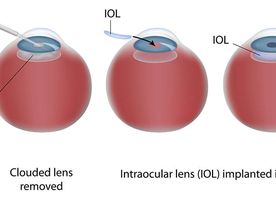Implantable Contact Lens (ICL) in Bishan
Search and Compare the Best Clinics and Doctors at the Lowest Prices for Implantable Contact Lens (ICL) in Bishan





Implantable Contact Lens (ICL) at Eagle Eye Centre Pte Ltd - Gleneagles in Central, Singapore




Implantable Contact Lens (ICL) at Eagle Eye Centre Pte Ltd - Parkway East in Central, Singapore



Implantable Contact Lens (ICL) at Dr Alicia Eye Specialist in Central, Singapore



Implantable Contact Lens (ICL) at C. H. Low Eye Surgical Centre in Central, Singapore


Implantable Contact Lens (ICL) at Specialist Eye and Eyelids Clinic - Main in Central, Singapore





Implantable Contact Lens (ICL) at Specialist Eye and Eyelids Clinic - Suntec in Central, Singapore





Implantable Contact Lens (ICL) at ISEC SINGAPORE International Specialist Eye Centre in Central, Singapore
Our partner clinics in are accredited by the following associations













































































































































No Time?
Tell us what you're looking for and we'll reach out to the top clinics all at once
WHY US?













































































































































No Time?
Tell us what you're looking for and we'll reach out to the top clinics all at once
What does a Implantable Contact Lens (ICL) Procedure Involve?
During ICL, your eyes are numbed with topical anesthetic drops, so you will be awake but will not feel anything. You may also be given a sedative to help you feel more relaxed. Your surgeon starts by cleaning your eyes and applying a sterile drape around your eye. An eyelid speculum is used to keep you from blinking. After that, your surgeon creates an incision near the cornea to position the contact lens.
Because the contact lens is foldable, only a tiny micro-incision is required during the procedure. Once your surgeon has created the incision, the lens is then carefully implanted between the iris and the natural lens through the microincisions. Then, the contact lens unfolds. After the contact lens is unfolded, your surgeon places the edges of the lens behind the iris to make it truly invisible.
How Long Should I Stay in Bishan for a Implantable Contact Lens (ICL) Procedure?
The procedure usually takes around 10 to 15 minutes per eye. If you need the contact lenses on both eyes, then they will be implanted on the same day. ICL is an outpatient procedure, meaning you can leave the hospital right away. However, you should not leave Bishan immediately. Plan to stay for at least 3 to 5 days for initial recovery and a follow-up checkup. During the follow-up checkup, your surgeon will examine your eyes and test your vision refraction.
What's the Recovery Time for Implantable Contact Lens (ICL) Procedures in Bishan?
The recovery time after ICL is relatively short. While your eye will be completely healed within a month or two, you should see the result within 24 hours. It is recommended that you take at least 5 to 7 days off work and avoid any vigorous activity. Your surgeon will discuss the recovery timeline in detail with you.
Despite the surgery being fairly swift, typically lasting less than half an hour for both eyes, the post-surgery phase holds significant importance for complete healing. Routine check-ups post-procedure are essential to track the healing progression and ascertain ideal outcomes. A rigorous care routine post-surgery is crucial to expedite recuperation.
What sort of Aftercare is Required for Implantable Contact Lens (ICL) Procedures in Bishan?
For the first several days, you should limit your activity, avoid heavy exercise, stay away from swimming pools, and avoid any activity that can cause fluid to drip into your eyes. You may experience some mild pain or burning of the eyes after the procedure, but your surgeon will prescribe you medications to help ease the pain and discomfort. It is also recommended that you visit your eye doctor once a year for an examination. You can choose to do the once-a-year visit with your local doctor back at home or your surgeon in Bishan.
What's the Success Rate of Implantable Contact Lens (ICL) Procedures in Bishan?
Before being placed on the market, ICL was subject to extensive research and development. Today, it is an effective, safe, and highly successful procedure, with about 99% of patients who had it claimed to be satisfied with their implants.
Multiple scientific research and testimonials shared by patients accentuate the effectiveness of the Implantable Contact Lens operation, as the majority of patients reach at least 20/40 vision, which is a common legal requirement for driving. Moreover, this operation is recognized for its high safety standards, coupled with a minuscule complication rate.
However, similar to all medical interventions, the results of the Implantable Contact Lens (ICL) can fluctuate amongst different individuals. This can be due to several contributors such as the refractive error magnitude, the total eye health of the patient, and the adherence to post-operation guidelines. It is worth acknowledging that although the Implantable Contact Lens (ICL) has demonstrated significant effectiveness, it doesn’t act as a deterrent against age-oriented eye disorders such as cataracts or macular degeneration.
Are there Alternatives to Implantable Contact Lens (ICL) Procedures in Bishan?
If you decide that ICL is not for you, then you can opt for the alternatives. These include:
- LASIK is a type of refractive eye surgery that aims to correct vision problems, such as farsightedness, nearsightedness, and astigmatism. It works by reshaping the cornea to enable light that enters the eye to be properly focused onto the retina. LASIK is one of the most common refractive eye surgery and it has a very high success rate.
- Epi-LASIK is very similar to LASIK. However, it is mostly done for low myopes and patients who have thin corneas. It works by reshaping the surface of the cornea through the process of removing the corneal epithelium.
This information has been accurately sourced and verified by a medical professional for its accuracy, however, we strongly recommend you to consult with your doctor before pursuing medical procedures overseas.



























